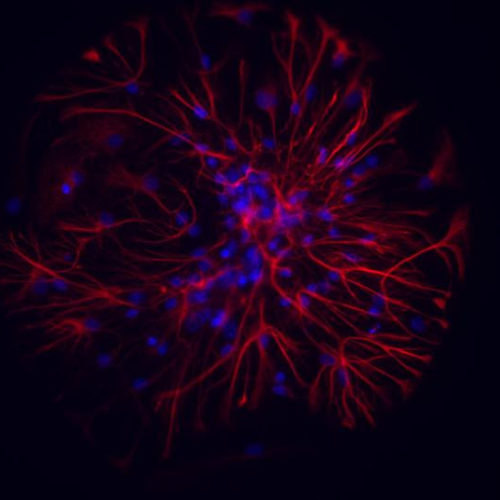by Jennifer Brown, University of Iowa The hormone FGF21 is made in the liver and acts in the brain to suppress sugar intake and the preference for sweet taste. The cartoon illustrates the role FGF21 plays in food choices.Understanding the biological mechanisms that control sugar intake and preference for sweet taste could have important implications...
Tag: <span>neuroscience</span>
Is what I see, what I imagine? Study finds neural overlap between vision and imagination
by Catherine Bridges, Medical University of South Carolina An ibis as “seen” by a machine, 2015. This processed image, which is based on a photograph by Dr. Zachi Evenor, is courtesy of software engineer Guenther Noack, 2015, and is reproduced from Wikimedia Commons (CC BY 4.0). Credit: Dr. Guenther Noack, 2015, reproduced from Wikimedia Commons...
Engineering and philosophy combine for an emerging understanding of smell
by Brandie Jefferson, Washington University in St. Louis How does the brain detect smells? To find out, you could rely on biological sciences, using high tech imaging methods, or studying anatomical diagrams. You could even get philosophical and ask, “What is smell, anyway?” Or, you could turn to engineering. That’s what ShiNung Ching, an associate...
Giant leap in diagnosing liver disease
Stool microbes make a challenging diagnosis easier SCHEMATIC SHOWING HOW THE MICROBIOME SIGNATURE FROM STOOL SAMPLES CAN BE USED TO TEST FOR CIRRHOSIS. view more CREDIT: SALK INSTITUTE LA JOLLA–(July 1, 2020) Chronic liver disease represents a major global public health problem affecting an estimated 844 million people, according to the World Health Organization. It...
Re-purposed drugs could reverse blood vessel damage in diabetes
by University of Leeds The blood flow in the surface blood vessels of a mouse that was not treated with M-3. Drugs that were developed to treat Alzheimer’s Disease could be re-purposed to prevent—or even reverse—the damage done to the blood vessels in people who are obese or suffer from type 2 diabetes, according to...
Gold nanoparticles to save neurons from cell death
Published on ACS Nano, journal of the American Chemical Society, the study opens important perspectives for treatment of diseases such as Alzheimer’s and Huntington’s disease, but also epilepsy, brain trauma and stroke. NEURONS AND ATROCYTES UNDER A FLUORESCENCE MICROSCOPE view more CREDIT: IIT-ISTITUTO ITALIANO DI TECNOLOGIA Lecce, 25th June 2020 – Gold nanoparticles have been...
New adjuvant successful in extending immunity against HIV
ATLANTA – Researchers at the Yerkes National Primate Research Center and the Emory Vaccine Center (EVC) are first to show a new adjuvant, 3M-052, helps induce long-lasting immunity against HIV. The study results are published today in Science Immunology. In this pre-clinical study that included 90 rhesus monkeys, the researchers showed 3M-052, a new, synthetic...
Gold nanoparticles to save neurons from cell death
Published on ACS Nano, journal of the American Chemical Society, the study opens important perspectives for treatment of diseases such as Alzheimer’s and Huntington’s disease, but also epilepsy, brain trauma and stroke. ISTITUTO ITALIANO DI TECNOLOGIA – IIT CREDIT: IIT-ISTITUTO ITALIANO DI TECNOLOGIA Lecce, 25th June 2020 – Gold nanoparticles have been developed in the...
CANCER AND CHEMO TEAM UP TO MAKE NEUROPATHY WORSE
Contrary to common medical guidance, chemotherapy does not appear to be the only culprit in neuropathy, a neurological side effect of cancer treatment, according to a new study in rats. Cancer itself contributes heavily, too, and the stresses on neurons appear far worse than the sum of the two causes. “There was some distress caused...
New findings redefine organisation of the claustrum
Researchers from Karolinska Institutet and Nanyang Technological University (NTU) in Singapore have found that the claustrum is organized into functional connectivity modules rather than a hub-like structure, which up until now, was the prevailing idea. The study was recently published in Current Biology. “We found that the synaptic connectivity between the cortex and claustrum is...






